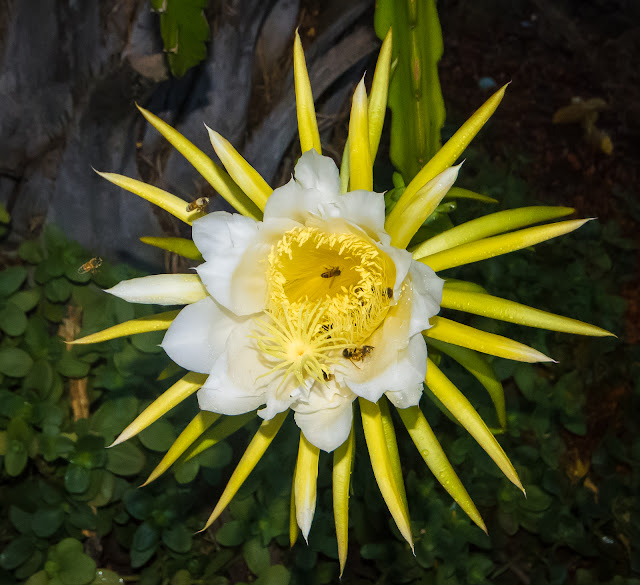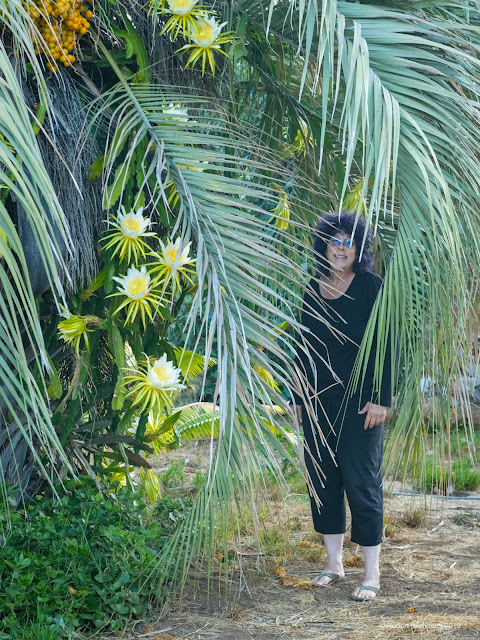I had two, I planted them both over thirty years ago, but a red trumpet vine ate one of them and left nothing in its wake.
At one time the native South American palm was known as a butia capitata, but there are all types of subspecies recognized now and it may be more truthfully termed a butia yatay, eriospathea or odorata, I honestly can't keep up. It is a great palm, with the tastiest fruit. You can see the more compact cultivars planted up State St. in Santa Barbara.
Soon after the palm was planted I placed small sections of hylocereus undatus, or night blooming cereus cacti, in the crooks of the palm.This is now classified as selenicereus undatuus after tissue typing showed it to be under that taxonomic botanical branch.In any case, these epiphytes now have taken over the entire trunk of the tree, en masse.
It gives me a very spectacular bloom several times a year, with flowers over a foot wide in breadth.I have never trimmed the beard from this palm, wanting to protect the epiphyte with shade.
Todd, the arborist who takes care of my palms, took it upon himself to trim the brown dead beard off the palm this week.
I guess that he and my wife were sick of it.
It does look better, hopefully there will be no sunburn although if the night blooming cereus can handle the sun in Hawaii, Fallbrook should be no problem.
I wonder if anybody else has ever done this before, combined butia and selenicereus? Has been a wonderful marriage.
Botanical symbiosis in action. Everybody happy, especially the bees. Hopefully the tree will be strong enough to harbor the heavy guest for perpetuity.







No comments:
Post a Comment